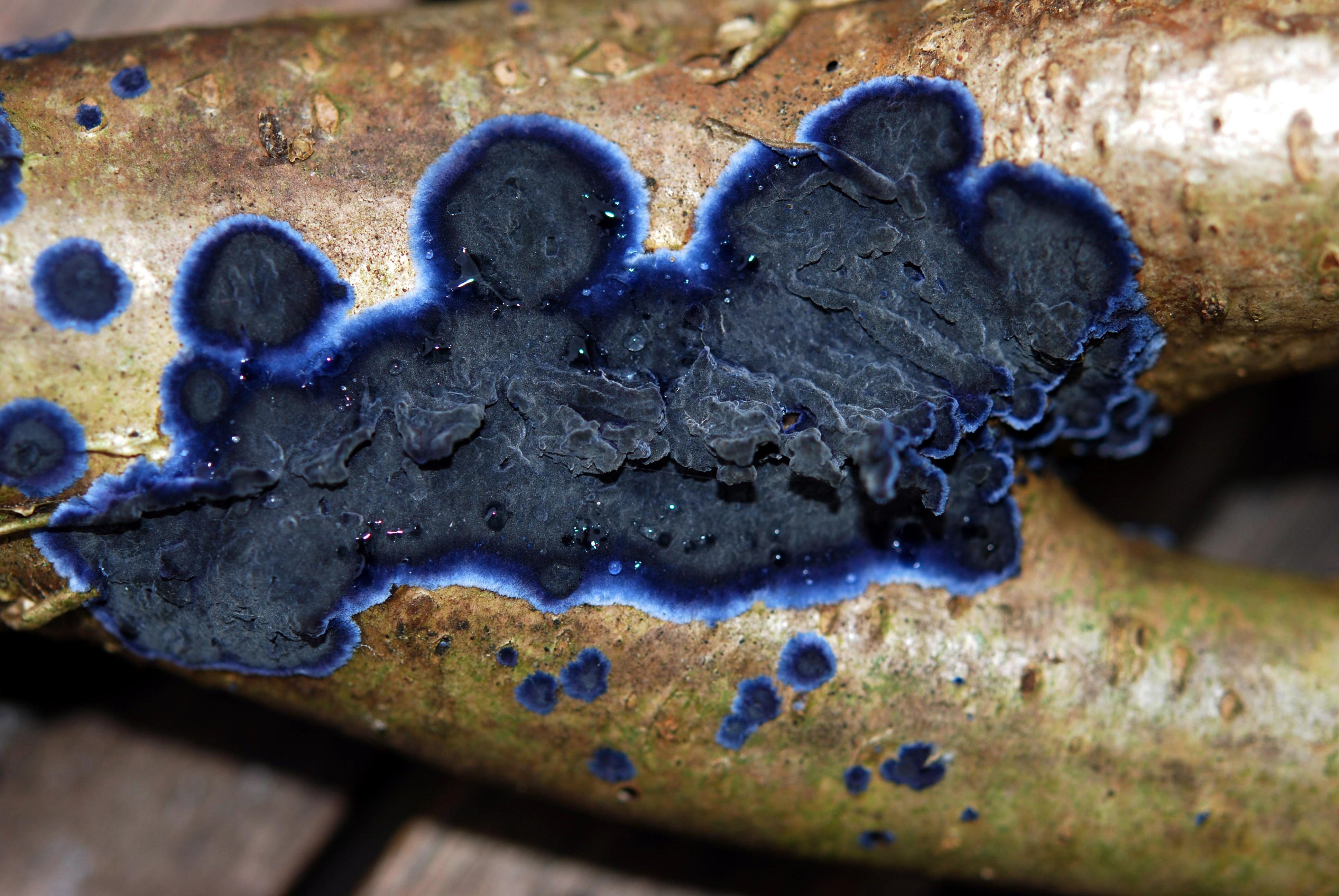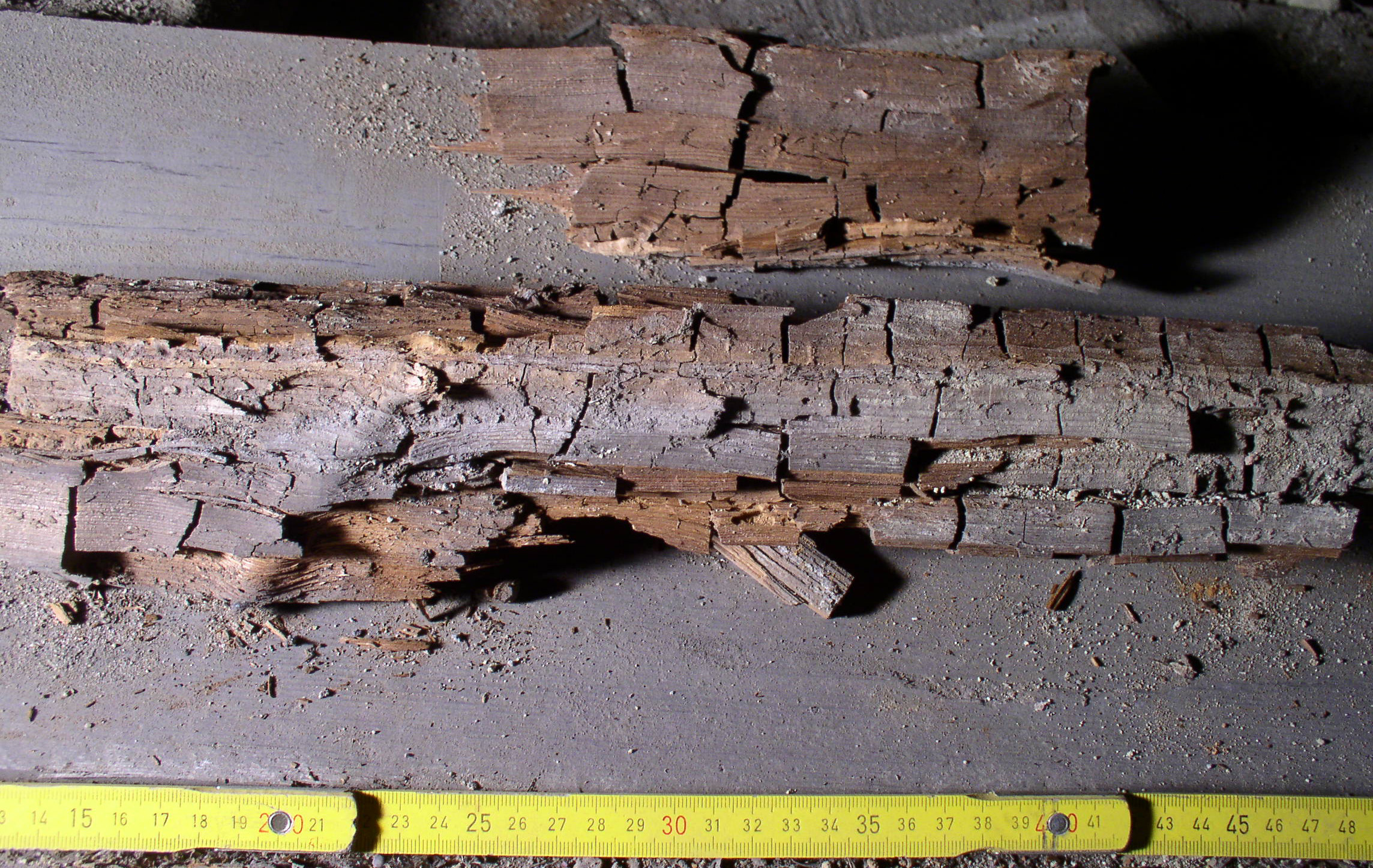|
Corticioid Fungi
The corticioid fungi are a group of fungi in the Basidiomycota typically having effused, smooth basidiocarps (fruit bodies) that are formed on the undersides of dead tree trunks or branches. They are sometimes colloquially called crust fungi or patch fungi. Originally such fungi were referred to the genus '' Corticium'' ("corticioid" means ''Corticium''-like) and subsequently to the family ''Corticiaceae'', but it is now known that all corticioid species are not necessarily closely related. The fact that they look similar is an example of convergent evolution. Since they are often studied as a group, it is convenient to retain the informal (non-taxonomic) name of "corticioid fungi" and this term is frequently used in research papersLarsson K-H, Larsson E, Koljalg U. (2004). High phylogenetic diversity among corticioid homobasidiomycetes. ''Mycological Research'' 108: 983–1002. and other texts. History The genus ''Corticium'' was established by Persoon in 1794 for fungi having smo ... [...More Info...] [...Related Items...] OR: [Wikipedia] [Google] [Baidu] |
Corticium Roseum
''Corticium roseum'' is a species of fungus in the family Corticiaceae. Basidiocarps (fruit bodies) are effused, smooth, corticioid, and pink. The species has a wide, north and south temperate distribution and in Europe is typically found on dead, attached branches of ''Salix'' and ''Populus''. Taxonomy ''Corticium roseum'' was originally described by Persoon in 1794 as part of his new genus '' Corticium''. It was later selected as the type species of the genus.Donk MA. (1963). The generic names proposed for Hymenomycetes XIII. ''Taxon'' 12: 158-159. Morphological differences between collections indicated that ''C. roseum'' might be a species complex and several new species were described. Molecular research, based on cladistic analysis of DNA sequences A nucleic acid sequence is a succession of bases signified by a series of a set of five different letters that indicate the order of nucleotides forming alleles within a DNA (using GACT) or RNA (GACU) molecule. By convention, ... [...More Info...] [...Related Items...] OR: [Wikipedia] [Google] [Baidu] |
Wood-decay Fungus
A wood-decay or xylophagous fungus is any species of fungus that digests moist wood, causing it to rot. Some species of wood-decay fungi attack dead wood, such as brown rot, and some, such as ''Armillaria'' (honey fungus), are parasitic and colonize living trees. Excessive moisture above the fibre saturation point in wood is required for fungal colonization and proliferation. In nature, this process causes the breakdown of complex molecules and leads to the return of nutrients to the soil. Wood-decay fungi consume wood in various ways; for example, some attack the carbohydrates in wood and some others decay lignin. The rate of decay of wooden materials in various climates can be estimated by empirical models.Viitanen, T. et al. (2010). Towards modelling of decay risk of wooden materials. European Journal of Wood and Wood Products 68:303-313. Wood-decay fungi can be classified according to the type of decay that they cause. The best-known types are brown rot, soft rot, and whit ... [...More Info...] [...Related Items...] OR: [Wikipedia] [Google] [Baidu] |
Steccherinum
''Steccherinum'' is a widely distributed genus of toothed crust fungi in the family Steccherinaceae. Taxonomy ''Steccherinum'' was circumscribed by Samuel Frederick Gray in his 1821 work ''A Natural Arrangement of British Plants''. Description ''Steccherinum'' fungi have a range of fruit body morphologies, including resupinate (crust-like), effused-reflexed (crust-like with the edges extending outwards to form caps), or pileate with either a stipe or only a stipe-like base. Species A 2008 estimate placed 33 species in ''Steccherinum''. , Index Fungorum accepts 50 species: *'' S. agaricoides'' (Sw.) Banker (1906) *'' S. aggregatum'' Hjortstam & Spooner (1990) – Sabah Sabah () is a state of Malaysia located in northern Borneo, in the region of East Malaysia. Sabah borders the Malaysian state of Sarawak to the southwest and the North Kalimantan province of Indonesia to the south. The Federal Territory o ... *'' S. alaskense'' Lindsey & Gilb. (1980) *'' S. albidum' ... [...More Info...] [...Related Items...] OR: [Wikipedia] [Google] [Baidu] |
Stereum
''Stereum'' is the type genus of the Stereaceae family of fungi, in the Russulales order. Until recently, the genus was classified in the Corticiaceae family, of the Corticiales order. However, it was given its own family as a result of the split-up of the Corticiales. Common names for species of this genus include leaf fungus, wax fungus, and shelf fungus. Fungi having a shape similar to a ''Stereum'' are said to have a stereoid shape. ''Stereum'' contains 27 species that have a widespread distribution. Habitat ''Stereum'' species are found to live on all kinds of deadwood or hardwood or dead leaves (they are therefore said to be saprobic). Sometimes they are also found on living leaves. Characteristics ''Stereum'' species are wood decay fungi. Their simple, shelving fruiting bodies have a smooth hymenium, lacking gills or tubes. Like most members or the family Stereaceae, ''Stereum'' fruiting bodies lack clamp connections and produce amyloid basidiospores. The species can be ... [...More Info...] [...Related Items...] OR: [Wikipedia] [Google] [Baidu] |
Stereum Hirsutum02
''Stereum'' is the type genus of the Stereaceae family of fungi, in the Russulales order. Until recently, the genus was classified in the Corticiaceae family, of the Corticiales order. However, it was given its own family as a result of the split-up of the Corticiales. Common names for species of this genus include leaf fungus, wax fungus, and shelf fungus. Fungi having a shape similar to a ''Stereum'' are said to have a stereoid shape. ''Stereum'' contains 27 species that have a widespread distribution. Habitat ''Stereum'' species are found to live on all kinds of deadwood or hardwood or dead leaves (they are therefore said to be saprobic). Sometimes they are also found on living leaves. Characteristics ''Stereum'' species are wood decay fungi. Their simple, shelving fruiting bodies have a smooth hymenium, lacking gills or tubes. Like most members or the family Stereaceae, ''Stereum'' fruiting bodies lack clamp connections and produce amyloid basidiospores. The species can be ... [...More Info...] [...Related Items...] OR: [Wikipedia] [Google] [Baidu] |
Hyphodontia Sambuci Eglinton
''Hyphodontia'' is a genus of fungi in the family Hymenochaetaceae (Schizoporaceae in Index Fungorum). The genus was circumscribed by Swedish mycologist John Eriksson (mycologist), John Eriksson in 1958. Species *''Hyphodontia abieticola, H. abieticola'' *''Hyphodontia adhaerispora, H. adhaerispora'' *''Hyphodontia alba, H. alba'' *''Hyphodontia alienata, H. alienata'' *''Hyphodontia aloha, H. aloha'' *''Hyphodontia altaica, H. altaica'' *''Hyphodontia alutaria, H. alutaria'' *''Hyphodontia apacheriensis, H. apacheriensis'' *''Hyphodontia arguta, H. arguta'' *''Hyphodontia aspera, H. aspera'' *''Hyphodontia barba-jovis, H. barba-jovis'' *''Hyphodontia boninensis, H. boninensis'' *''Hyphodontia borealis, H. borealis'' *''Hyphodontia breviseta, H. breviseta'' *''Hyphodontia byssoidea, H. byssoidea'' *''Hyphodontia candidissima, H. candidissima'' *''Hyphodontia capitata, H. capitata'' *''Hyphodontia cineracea, H. cineracea'' *''Hyphodontia crassispora, H. crassispora'' *''Hyphodonti ... [...More Info...] [...Related Items...] OR: [Wikipedia] [Google] [Baidu] |
John Eriksson (mycologist)
John Leonard Eriksson (born 26 March 1921 in Hagfors – died 1 June 1995) was a Swedish mycologist. He specialized in crust fungi of the basidiomycetes, collecting in Sweden (especially in Muddus National Park, the Gothenburg region and Värnamo), Finland and Canada. Eriksson was a student of John Axel Nannfeldt and Seth Lundell, and defended his doctoral dissertation ''Studies in the Heterobasidiomycetes and Homobasidiomycetes-Aphyllophorales of Muddus National Park in Northern Sweden'' on the wood-associated fungal flora in Muddus National Park at Uppsala University in 1958. The opponent (similar to an external examiner) was the Dutch mycologist Marinus Donk. Eriksson was employed as a senior lecturer at the University of Gothenburg in 1961. He received a personal doctorate in 1967 which was transformed into a professorship in 1977. Eriksson retired in 1986. Eriksson supervised several students who would later carry on the crust fungus tradition, including Nils Hallenberg ... [...More Info...] [...Related Items...] OR: [Wikipedia] [Google] [Baidu] |
Christiaan Hendrik Persoon
Christiaan Hendrik Persoon (1 February 1761 – 16 November 1836) was a German mycologist who made additions to Linnaeus' mushroom taxonomy. Early life Persoon was born in South Africa at the Cape of Good Hope, the third child of an immigrant Pomeranian father and Dutch mother. His mother died soon after he was born; at the age of thirteen his father (who died a year later) sent him to Europe for his education. Education Initially studying theology at Halle, at age 22 (in 1784) Persoon switched to medicine at Leiden and Göttingen. He received a doctorate from the "Kaiserlich-Leopoldinisch-Carolinische Deutsche Akademie der Naturforscher" in 1799. Later years He moved to Paris in 1802, where he spent the rest of his life, renting an upper floor of a house in a poor part of town. He was apparently unemployed, unmarried, poverty-stricken and a recluse, although he corresponded with botanists throughout Europe. Because of his financial difficulties, Persoon agreed to dona ... [...More Info...] [...Related Items...] OR: [Wikipedia] [Google] [Baidu] |
Fungi
A fungus ( : fungi or funguses) is any member of the group of eukaryotic organisms that includes microorganisms such as yeasts and molds, as well as the more familiar mushrooms. These organisms are classified as a kingdom, separately from the other eukaryotic kingdoms, which by one traditional classification include Plantae, Animalia, Protozoa, and Chromista. A characteristic that places fungi in a different kingdom from plants, bacteria, and some protists is chitin in their cell walls. Fungi, like animals, are heterotrophs; they acquire their food by absorbing dissolved molecules, typically by secreting digestive enzymes into their environment. Fungi do not photosynthesize. Growth is their means of mobility, except for spores (a few of which are flagellated), which may travel through the air or water. Fungi are the principal decomposers in ecological systems. These and other differences place fungi in a single group of related organisms, named the ''Eumycota'' (''t ... [...More Info...] [...Related Items...] OR: [Wikipedia] [Google] [Baidu] |
Convergent Evolution
Convergent evolution is the independent evolution of similar features in species of different periods or epochs in time. Convergent evolution creates analogous structures that have similar form or function but were not present in the last common ancestor of those groups. The cladistic term for the same phenomenon is homoplasy. The recurrent evolution of flight is a classic example, as flying insects, birds, pterosaurs, and bats have independently evolved the useful capacity of flight. Functionally similar features that have arisen through convergent evolution are ''analogous'', whereas '' homologous'' structures or traits have a common origin but can have dissimilar functions. Bird, bat, and pterosaur wings are analogous structures, but their forelimbs are homologous, sharing an ancestral state despite serving different functions. The opposite of convergence is divergent evolution, where related species evolve different traits. Convergent evolution is similar to parallel evo ... [...More Info...] [...Related Items...] OR: [Wikipedia] [Google] [Baidu] |


_J._Erikss_201034.jpg)

_-_geograph.org.uk_-_1721019.jpg)

